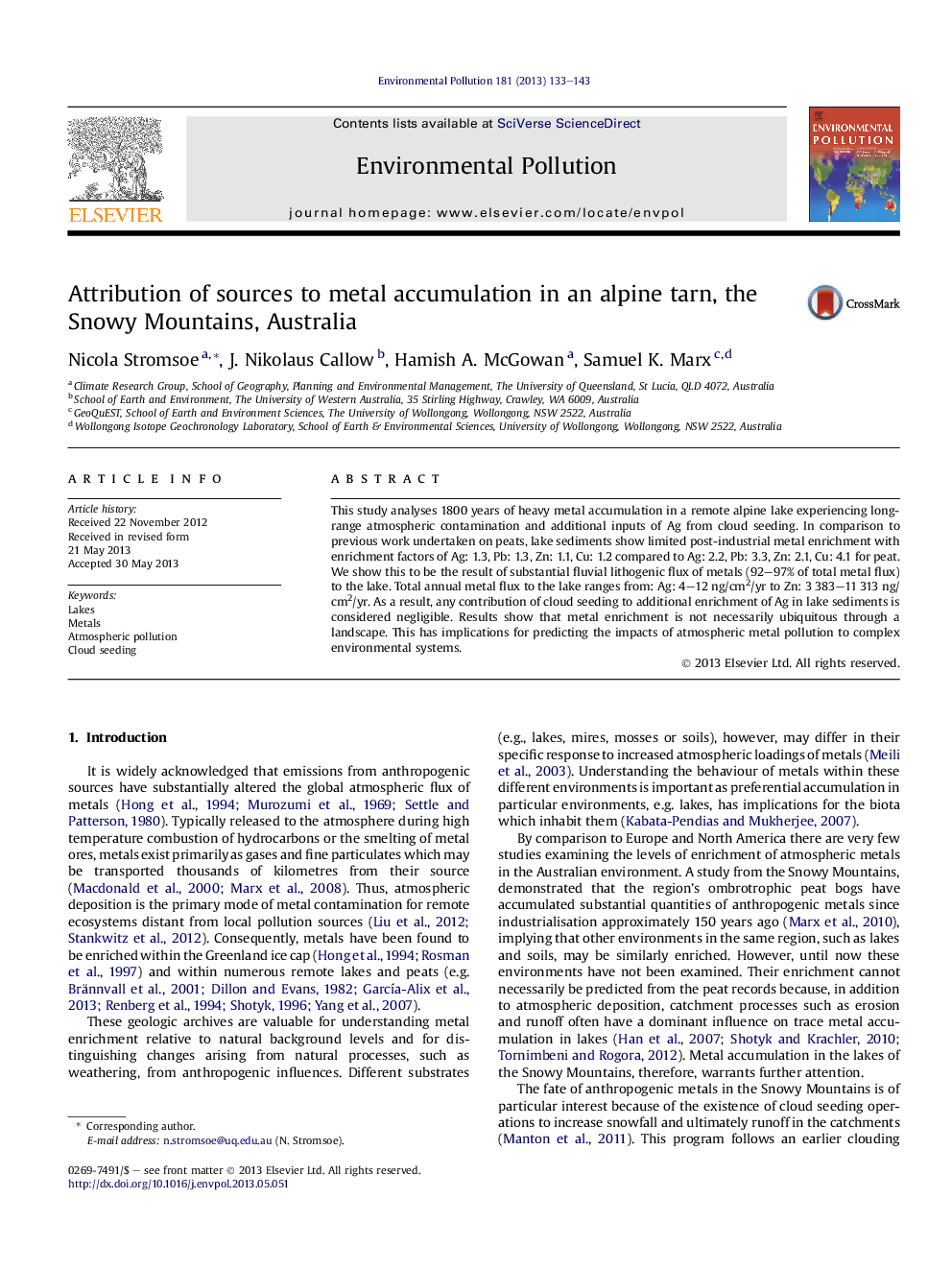| Article ID | Journal | Published Year | Pages | File Type |
|---|---|---|---|---|
| 6317301 | Environmental Pollution | 2013 | 11 Pages |
Abstract
This study analyses 1800 years of heavy metal accumulation in a remote alpine lake experiencing long-range atmospheric contamination and additional inputs of Ag from cloud seeding. In comparison to previous work undertaken on peats, lake sediments show limited post-industrial metal enrichment with enrichment factors of Ag: 1.3, Pb: 1.3, Zn: 1.1, Cu: 1.2 compared to Ag: 2.2, Pb: 3.3, Zn: 2.1, Cu: 4.1 for peat. We show this to be the result of substantial fluvial lithogenic flux of metals (92-97% of total metal flux) to the lake. Total annual metal flux to the lake ranges from: Ag: 4-12Â ng/cm2/yr to Zn: 3 383-11Â 313Â ng/cm2/yr. As a result, any contribution of cloud seeding to additional enrichment of Ag in lake sediments is considered negligible. Results show that metal enrichment is not necessarily ubiquitous through a landscape. This has implications for predicting the impacts of atmospheric metal pollution to complex environmental systems.
Related Topics
Life Sciences
Environmental Science
Environmental Chemistry
Authors
Nicola Stromsoe, J. Nikolaus Callow, Hamish A. McGowan, Samuel K. Marx,
